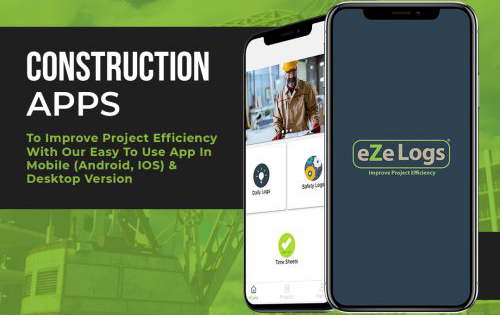Capital programs across cities, counties, and states face common constraints—ballooning scopes, fluctuating budgets, unpredictable contractors, outdated workflows, and mounting compliance obligations. Yet despite similar challenges, some agencies consistently deliver complex infrastructure on time, within budget, and with minimal conflict. Others struggle with change orders, audit findings, and stalled schedules.

The divide rarely comes down to size or funding alone. What often separates high-performing public infrastructure organizations is their operational approach—how they manage data, structure workflows, train staff, and enforce accountability across contractors and internal departments. By analyzing the frontline experiences of agencies that have executed multibillion-dollar portfolios, there are operational lessons worth adapting system-wide.
1. Unified Sourcing of Truth Across Departments
Agencies like the Los Angeles Metro and New York City’s Department of Design and Construction have prioritized platform unification—ensuring engineering, procurement, legal, and field teams work from the same system, not parallel silos. Instead of emailing versioned spreadsheets or routing PDFs, they enforce a centralized project record. Change orders, RFI threads, and contractor pay apps live in the same ecosystem as inspector dailies and budget draws.
This reduces conflicting interpretations of project status and gives executives a clearer sense of risks across the capital portfolio. It also helps when audit season comes around—supporting source-of-truth reporting that doesn’t rely on manual data stitching.
2. Formalizing Role-Based Access Early
The Massachusetts Department of Transportation learned the hard way during early phases of their accelerated bridge programs: too many people with too much access leads to untraceable changes. When multiple PMs, CMs, and consultants can edit cost projections or update submittal statuses, accountability breaks down.
In response, they restructured digital systems to enforce role-based access controls from day one. Estimators input budgets. Resident engineers approve field changes. Finance can view—but not modify—drawdown data. Every action is logged and attributable. For new projects, this structure is now standardized from project initiation, which reduces disputes over data integrity and supports better cost forecasting.
3. Replacing Manual Tracking with Workflow-Driven Automation
The Port Authority of New York & New Jersey shifted away from manual submittal logs and toward rule-driven workflows that automatically prompt users for required steps—such as environmental review flags, DBE verifications, or schedule impact analysis—before a submittal can advance.
This approach eliminates email delays and ambiguous handoffs. Submittals no longer get “lost” waiting for someone to realize they need to take action. It also enables metrics-based management. Directors can now see average review durations, backlog bottlenecks by division, and trends in rejected documentation.
4. Modular Training over One-Time Onboarding
One underappreciated lesson comes from smaller agencies like the San Diego Association of Governments (SANDAG), which deliver regionally significant programs with lean teams. They’ve adopted a modular “train-the-trainer” structure instead of treating training as a one-time onboarding event.
Each division—construction, engineering, procurement—has one or two platform specialists who serve as internal experts. These specialists are trained in phases, aligned with real deliverables (e.g., how to initiate a contract or approve an invoice), and in turn train others. As new team members or consultants join, they receive specific, role-relevant instruction without dragging others into repetitive 101 sessions. This approach has enabled SANDAG to scale digital operations without increasing support overhead.
5. Templates with Guardrails, Not Just Flexibility
A recurring issue in less mature programs is overreliance on “flexible” templates that teams modify at will. Contract logs, RFIs, risk matrices, and status reports get adjusted to individual PM preferences, which makes cross-project or program-wide reporting impossible.
Contrast this with organizations like the Washington State Department of Transportation, which developed locked templates for contract change orders, milestone reporting, and monthly progress tracking. These templates enforce naming conventions, units of measure, funding source tracking, and schedule correlation. Flexibility still exists—but only within defined parameters. This ensures consistency across the program while maintaining enough adaptability to handle unique project conditions.
6. Building Contractor Accountability into the Platform
Public infrastructure organizations often overlook how systems can reinforce—not just track—contractor performance. Agencies like the Houston METRO authority have embedded contractor scorecards, safety metrics, and milestone completion rates directly into their project management platform.
When a contractor logs into the system, they see their active KPIs. Payments are tied to validated progress, and submittals are flagged if safety incidents are unresolved. This transparency reduces finger-pointing and aligns contractor behavior with agency priorities. It also supports smarter procurement by feeding historical performance into bid evaluations on future projects.
7. Documenting the “Why,” Not Just the “What”
Agencies that consistently withstand audits and legal challenges are those that document the reasoning behind approvals and exceptions—not just the documents themselves. The Chicago Department of Water Management requires approvers to record rationale when overriding internal red flags (e.g., approving a schedule extension due to weather delays despite budget impact).
This creates a project record that reflects decision-making, not just outcomes. It protects staff from claims of negligence and allows future teams to understand past choices when revisiting long-duration or phased capital programs.
8. Planning for Data Portability Before Closeout
As agencies mature in their digital practices, many are learning the value of planning data transitions before projects are complete. The Georgia Department of Transportation, for example, includes a “data handover” milestone in its project schedules. Contractors and consultants must package drawings, schedules, and logs into a structured archive that maps to the agency’s asset management systems.
Without this, public infrastructure owners risk losing valuable operational data when a project team dissolves. By standardizing metadata structures and mandating data retention formats, GDOT ensures that what’s built digitally during capital delivery can inform long-term maintenance and facility management.
Also Read:
Safety First: Enhancing Toolbox Talks with AI-Powered Safety Management in Ezelogs
Smart HR for Construction: Boosting Payroll Efficiency with Ezelogs’ AI-Enabled HRM Tools
Compliance Made Easy: How AI-Enabled Certified Payroll in Ezelogs Simplifies Regulatory Reporting
Centralizing Your Data: The Power of Ezelogs’ Product Data Sheet Library for Faster Submittals
Voice-Activated Efficiency: Transforming Construction Management with Ezelogs’


